- Home
- Chuck Palahniuk
Fugatives & Refugees
Fugatives & Refugees Read online
Fugatives & Refugees
Chuck Palahniuk
Chuck Palahniuk
Fugatives & Refugees
Fugitives & Refugees
A WALK IN PORTLAND, OREGON
Chuck Palahniuk
Grateful acknowledgment is made for permission to reprint the following material to:
Anton Pace and Delta Cafe, for the recipes "Fritters," "Fritter Dip," and "Black-Eyed Peas." Reprinted by permission of the Delta Cafe.
Le Happy Bar, Inc., for the recipe "Faux Vegan Crepes." Copyright © 2002 by Le Happy Bar, Inc. Reprinted by permission of Le Happy Bar, Inc.
Michael Cox and Wild Abandon, for the recipe "Dean Blair's hemon-havender Scones." Reprinted by permission of Michael Cox and Wild Abandon.
For my grandmother, Ruth Tallent
1920-2002
Introduction: Unraveling the Fringe
"E veryone in Portland is living a minimum of three lives," says Katherine Dunn, the author of Geek Love. She says, "Everyone has at least three identities."
She's sitting in the window of her apartment in Northwest Portland, rolling cigarettes and smoking them, her long blond hair parted in the middle and tied back. She's wearing black-framed glasses. The radiators clank and a siren goes by, four stories below on Glisan Street.
"They're a grocery store checker, an archaeologist, and a biker guy," she says. "Or they're a poet, a drag queen, and a bookstore clerk."
Rolling another cigarette, she says, "It's tricky because all the rich people are in disguise. You never know when the scruffy guy across the counter could be someone rich enough to buy the store, chew it up, and spit it out."
Smoking, she says, "The nice little old ladies from the West Hills—with their sweater sets and pearls—they're all rabid advocates of the death penalty."
Those green, wooded hills fill the window behind her.
Art and bookshelves fill the walls. The rooms are painted heavy gem colors of deep red and green. Yellow freesia bloom in a vase on the dining room table. In the kitchen, hanging above the sink, is a framed photograph of Kather-ine's maternal grandmother, Tressie, who cooked for a railroad crew, working her way west through the Dakotas at age eighteen.
Katherine's theory is that everyone looking to make a new life migrates west, across America to the Pacific Ocean. Once there, the cheapest city where they can live is Portland. This gives us the most cracked of the crackpots. The misfits among misfits.
"We just accumulate more and more strange people," she says. "All we are are the fugitives and refugees."
In 1989, when she wrote her bestselling novel Geek Love, Katherine set the story in Portland. The novel— about an outcast circus sideshow family who work tohave mutated, birth-defected children to boost their ticket sales—is easily the most famous book that uses the city as a background. Katherine wanted her story set in a place without associations in people's minds.
"When I was a young woman in Paris," she says, "I couldn't walk through the city and see it without seeing it the way the Impressionists did. Because Id seen it through their eyes, it was impossible to see it any other way."
The genesis of Geek Love was here. One day Katherine's seven-year-old son, Ben, refused to walk with her through the International Rose Test Gardens, so she walked alone among the hybrid roses. "I thought to myself, 'These would not have occurred in nature—I should've designed a better child.'"
She swam in the basement pool at the Metropolitan Learning Center, swimming and writing the book in her mind. For years she wrote "The Slice," a weekly newspaper column that documented oddball Portland happenings.
Now, Portland has its own identity, she says. "It's no longer this blank look when someone says Portland or Seattle or Walla Walla."
Now Katherine Dunn is working on a new book. Geek Love is being reissued, for a new generation of fans. Still, she's not planning to leave.
"First of all," she says, "I can't drive. Besides, when you walk down the street, every corner has a story." She smokes, exhaling out the window above Glisan Street. "Here," she says, "the rolling history of your life is visible to you everywhere you look."
And Katherine's right. Every corner does have a story. And every hillside.
In 1980, six days after graduating from high school, I moved to Portland, to the Burlingame View Apartments, on a steep hillside covered with blackberry vines above the Burlingame Fred Meyer supermarket on SW Barbur Boulevard.
My two roommates work in restaurants, and our closet space is filled with boxes of stolen food. Cases of champagne. Three-gallon cans of escargot packed in olive oil. We buy our dope from a potter who lives on NE Killingsworth Street and works in his basement, stoned and throwing the same coffee mug fifty times each day. Around him are racks filled with hundreds of identical coffee mugs, waiting to be fired in his kiln. He must be twenty-five or twenty-six years old. Ancient.
Days, I'm working as a messenger, delivering advertising proofs for the Oregonian newspaper. Nights, I wash dishes at Jonah's seafood restaurant. My roommates come home, and we throw food at each other. One night, cherry pie, big sticky red handfuls of it. We're eighteen years old. Legal adults. So we're stoned and drinking champagne every night, microwaving our escargot. Living it up.
In a moment of sacrifice, I find my childhood tonsils in a jar of formaldehyde with a label from Our Lady of Lourdes Hospital. In a grand gesture, I make a wish and throw the sealed jar off our apartment balcony, into the blackberry briars that cover the hillside.
It used to be easy when friends or family came to visit Portland. First, you took them to the Van Calvin Mannequin Museum. There they saw hundreds of dusty mannequins, arranged in nightmare settings in a sweltering hot warehouse. My favorite was the room where seventy battered, naked children sat watching black-and-white cartoons on a huge console television.
Then you visited the 24 Hour Church of Elvis, where tourists were married and publicly humiliated by the minister. Then the Western Bigfoot Society. Then the UFO Museum. Maybe you went to see the strippers at the old Carriage Room. Or you drove people out to the Safari Club so they could see the dozens of rare tigers and lions and leopards, now stuffed and filthy with cigarette smoke in a disco. Maybe you went to an ORGASM party (Oregon Guild Activists of S&M), where you watched bondage and torture demos. After that, you took everybody for a ride on Samtrak: the World's Smallest Railway, and by then the weekend was pretty much over.
Those were the good old days, when Ronald Reagan and George Bush (the elder) dreaded coming here so much they called Portland "Little Beirut." A presidential whistle-stop meant anarchists would gather along SW Broadway, outside the president's suite in the Hilton Hotel. They'd eat mashed potatoes, regular white ones, or potatoes dyed red or blue with food coloring. Then, when the motorcade arrived, they drank Syrup of Ipecac and puked big Red, White, and Blue barf puddles all over the hotel.
Okay, okay, what nobody knew is stomach acid makes blue food coloring turn green. So it looked like a protest against Italy... It's the thought that counts.
Sigh.
The only trouble with the fringe is, it does tend to unravel.
Now Portland is the home of Tonya Harding and Bob Packwood. To FBI experts who profile serial killers, the Pacific Northwest is "America's Killing Fields," because the people are so friendly and trusting. The wilderness is always nearby. It rains, and things rot fast.
What follows are sort-of snapshots of Portland. A sort-of photo album of the moment. From ax murders to penguins with a shoe fetish. From underground opium dens to riding fire engines to live sex shows. These are the stories you won't find in any official Portland history book. From rampaging Santa Clauses to the Self-Cleaning House. Here s just the tip of the Portland,
Oregon, iceberg. Myths. Rumors. Ghost stories. Recipes. What follows is a little history, a little legend, and a lot of friendly, sincere, fascinating people who maybe should've kept their mouths shut.
In between the people to meet and places to go, you'll find postcards. These aren't from places so much as from specific Portland moments.
My first apartment, for example, there on Barbur Boulevard. Within a month, one roommate got his third drunk driving arrest and fled to Seattle to avoid doing jail time. The other roommate fell in love with a Swedish woman who gave him a gold coke spoon with a ruby chip in the handle, and they went off to get married.
My three lives were messenger-dishwasher-stoner until the night two men robbed Jonah's seafood restaurant. They have pillowcases over their heads and sawed-off shotguns and make me press my face into the parking lot until my forehead is one big purple bruise. The restaurant owner wants me to double the amount stolen when I tell the police so he can turn a big profit on insurance fraud. For once I tell the truth, and I get fired.
I give up the apartment and move into a rented room.
Still, somewhere on that steep hillside of maple trees and blackberry stickers, my tonsils are where I threw them. The wish I made was to someday be a writer.
Talk the Talk:
A Portland Vocabulary Lesson
You say,"Or-GAWN." I say, "OR-a-gen." Nothing-short of a California license plate—marks you as an outsider faster than how you mispronounce local words. Here's a quick guide to local slang and how to say words such as Willamette, Multnomah, and Couch.
Alimony Flats/Empty-Nest Flats: See the Pearl District.
Ban Roll-on Building: The nickname for the building at 1000 SW Broadway. With the Broadway Metroplex Theaters in its basement, the building's nickname comes from what looks like a short, pale dome on the roof.
Benson Bubblers: The nickname for the elaborate four-armed public drinking fountains on downtown streets, originally donated by lumber tycoon Simon Benson.
Big Pink: The tallest building in Portland, the forty-three-story U.S. Bancorp Tower at W Burnside Street and SW Fifth Avenue.
The Black Box: The international-style 200 SW Market Street building.
Blue Jean: The nickname for Eugene, the home of the liberal arts University of Oregon.
The Bore-egonian: A nickname for the daily Oregonian newspaper.
Choirboys Peeing: A nickname for the fountain consisting of five arcs of spurting pipe at the corner of W Burnside Street and SW Fifth Avenue. It's also known as "the Carwash."
Corn Valley: The nickname for Corvallis, the home of Oregon State University, the state agricultural school.
Couch: Pronounced "Kooch," it's a street that runs through Northwest and Northeast Portland, named for Oregonian pioneer Captain John H. Couch.
Cruising the Gut: Teenagers cruising in a loop through downtown, going south on SW Broadway and north on SW Fourth Avenue.
The Devil's Triangle: The triangle formed by W Burnside Street and SW Stark and Eleventh. Occupied for years by the Silverado bar and the Club Portland men's bathhouse.
Enema 21: What employees call the Cinema 21 theater, on NW Twenty-first Avenue.
Estée Lauder's: A nickname for the gay bar C. C. Slaughters.
Felony Flats: The neighborhood of Southeast Portland bounded by SE Foster Road, the 205 freeway, and Johnson Creek Boulevard, known for having Portland s highest density of drug labs and ex-convict residents.
The Flesh Grotto: A nickname for the Fish Grotto restaurant, from when it was a popular singles' meat market, where Katherine Dunn (author of Geek Love) worked as a cocktail waitress.
Garlic Gulch: The neighborhood formerly dominated by Italian businesses along the south side of SE Belmont Street near Eleventh Avenue.
The Ghetto: The interconnected bars and dance clubs that surround the Fish Grotto restaurant at SW Eleventh Avenue and Stark Street.
Glisan: Originally pronounced "GLISS-en," currently pronounced "GLEE-sin," a street running through Northwest and Northeast Portland, named for pioneer Dr. Rodney Glisan.
Hotel Rajneesh: The redbrick building at SW Eleventh Avenue and Main Street, formerly the Martha Washington Hotel for Women, currently a Multnomah County jail. It was owned by the cult followers of the Bhagwan Shree Rajneesh in the 1980s.
The Jail Blazers: The local NBA team, the Portland Trailblazers. A nickname that stuck after several players were arrested for a variety of crimes.
Lake No-Negro/Fake Lost Ego/Fake Oswego: Nicknames for Lake Oswego, an affluent bedroom community south of Portland.
"Louie Louie" Building: The building at 409 SW Thirteenth Avenue where the Kingsmen originally recorded the song "Louie Louie." A local production company, Food Chain Films, occupies the preserved recording studio on the second floor. The brass plaque marking the building has been stolen.
Menopause Manor: The lone Plaza apartment building near Portland State University, especially since 1985.
Multnomah: Pronounced "Mult-NO-mah," from the native word Nematlnomacqu, the name of a tribe the Lewis and Clark Expedition found camped on what is now Sauvie Island. The name of the county that comprises most of Portland.
Murphy & Finnegan: An old nickname for the Meier & Frank department store, downtown at SW Fifth Avenue and Alder Street.
Nob Hill: The affluent neighborhood from W Burnside Street to NW Pettygrove Street, west of NW Seventeenth Avenue.
NoPo: North Portland.
Nordie's: The Nordstrom department store.
Old Town: The area of downtown north of W Burnside Street and east of NW Broadway. Formerly known as "the North End," "Satan's City," "the Bad Lands," and "the Big Eddy," it was the city's district for prostitution, drugs, and gambling.
The Pearl: The urban district just north of W Burnside Street and west of NW Broadway. A mixed area of expensive condominium lofts and apartments for low-income people. It has the largest concentration of art galleries in the city, as well as restaurants, nightclubs, and small shops. Aka Alimony Flats and Empty-Nest Flats.
Piggott's Folly: The elaborate castle built by Charles H. Piggott in 1892 at 2591 SW Buckingham Avenue and visible on the hillside, south of Portland State University.
Pill Hill: Marquam Hill, just south of downtown Portland, site of several hospitals, including Oregon Health Sciences University (OHSU).
Piss-U: Portland State University, aka Piss-U-Off.
Prosti-tots: Homeless street kids who trade sex for money.
Psycho Safeway: The Safeway supermarket on SW Jefferson Street, between SW Tenth and Eleventh Avenues. Famous for the antics of insane street people, drug-addicted shoplifters, and students from nearby Portland State University.
Pull My Finger: A nickname for Portlandia, a huge copper statue by Raymond Kaskey that sits above the entrance to the Portland Building at 1120 SW Fifth Avenue. The statue crouches above the buildings front doors and seems to extend its index finger.
Reedies: Students or graduates of Reed College in Southeast Portland, among them Barret Hansen, known now as Dr. Demento.
The Schnitz: The nice, clean, and beige Arlene Schnitzer Concert Hall at SW Broadway and Main Street, formerly the Paramount, a murky black-and-gold rock concert venue, formerly the Portland movie palace.
The Scum Center: The Rose Festival's "Fun Center" carnival in Tom McCall Waterfront Park.
Silver Dildo: A nickname for the Silverado bar, which features male strippers. See also the Devil's Triangle.
Stinky Town: The nickname for the area below the south end of the St. John's Bridge, site of a derelict plant that used to process natural gas. The plant's crumbling headquarters, topped with a four-sided clock tower, is considered the most photographed landmark in Portland.
String Town: The nickname for the Albina area when it housed Irish, Italian, and German railway workers. Origin unknown.
Sucker Creek Swamp: The original name for Lake Oswego before it was subdivided and marketed as an exclusive bedroom community for the we
althy.
Three Groins in a Fountain: A nickname for the statue Quest by Count Alexander von Svoboda on the west side of the Standard Insurance Center, at SW Fifth Avenue and Salmon Street.
Trendy-Third/Trendy-First: NW Twenty-third and Twenty-first Avenues, currently lined with trendy, chic shops and restaurants.
Trustafarians: Slang for would-be hippies and drug, environmental, and anarchy activists who wear hemp and patchouli and pretend to be poor, despite the sizable incomes they receive from trust funds endowed by their wealthy families.
24 Hour Church of Elvis: The art installation and shrine, formerly located at 720 SW Ankeny Street.
Vaseline Flats: The area of Northwest Portland west of the 405 freeway, popular with homosexual men and women, aka "the Swish Alps."
The V-C: The Virginia Cafe, a bar and restaurant at 725 SW Park Avenue.
The V-Q: The Veritable Quandary, a bar and restaurant at 1220 SW First Avenue.
Willamette: Pronounced "Wil-LAMB-met," from the native word Wal-lamt, meaning "spilled water," and referring to the waterfalls south of Portland at Oregon City. Now the name of the river that runs north through Portland.

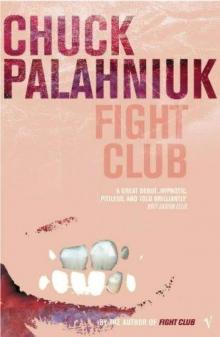 Fight Club
Fight Club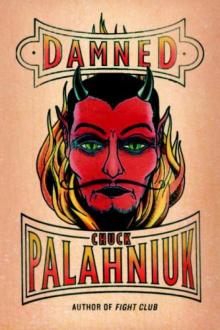 Damned
Damned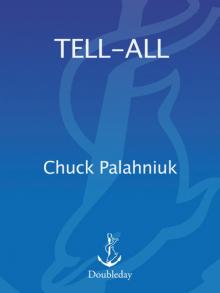 Tell-All
Tell-All Choke
Choke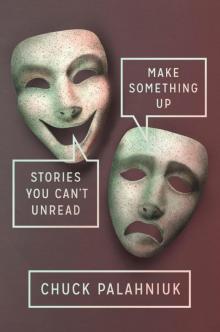 Make Something Up: Stories You Can't Unread
Make Something Up: Stories You Can't Unread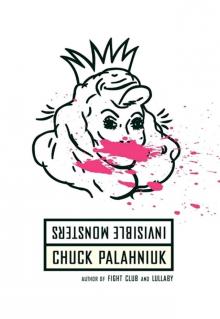 Invisible Monsters
Invisible Monsters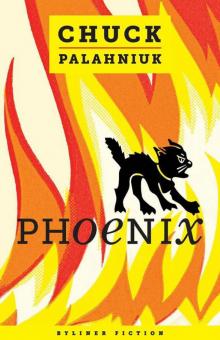 Phoenix
Phoenix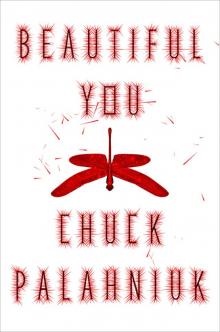 Beautiful You: A Novel
Beautiful You: A Novel Haunted
Haunted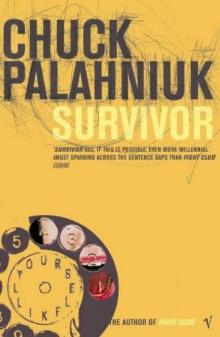 Survivor
Survivor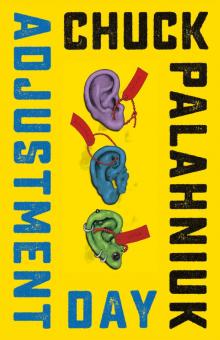 Adjustment Day
Adjustment Day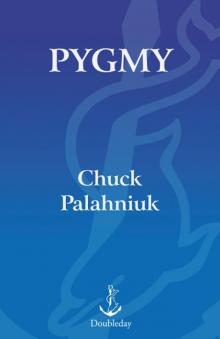 Pygmy
Pygmy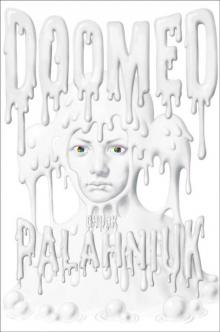 Doomed
Doomed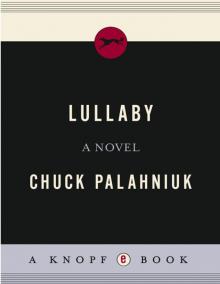 Lullaby
Lullaby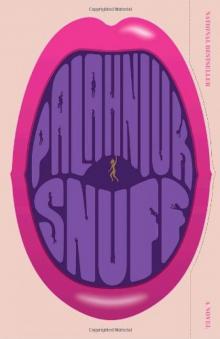 Snuff
Snuff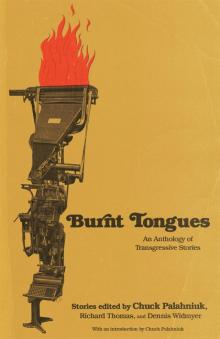 Burnt Tongues
Burnt Tongues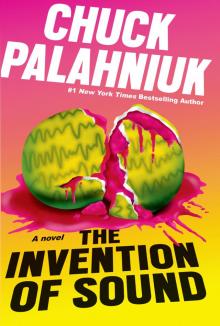 The Invention of Sound
The Invention of Sound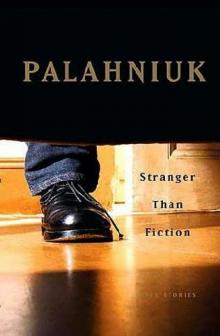 Stranger Than Fiction (True Stories)
Stranger Than Fiction (True Stories) Rant: The Oral History of Buster Casey
Rant: The Oral History of Buster Casey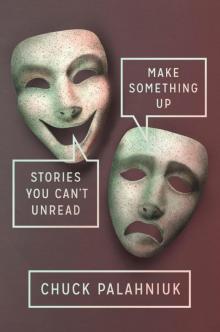 Make Something Up
Make Something Up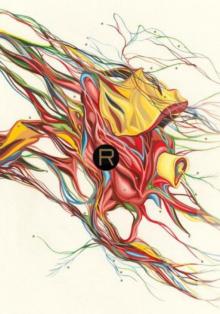 Rant: An Oral Biography of Buster Casey
Rant: An Oral Biography of Buster Casey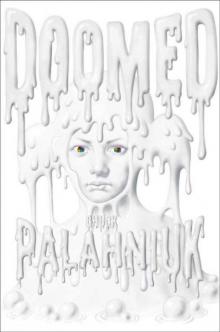 Doomed d-2
Doomed d-2 HOPE AND GORY
HOPE AND GORY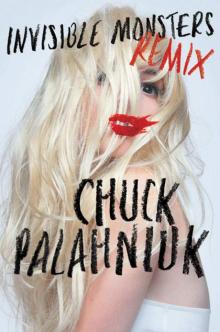 Invisible Monsters Remix
Invisible Monsters Remix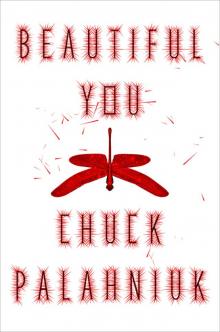 Beautiful You
Beautiful You Fugatives & Refugees
Fugatives & Refugees